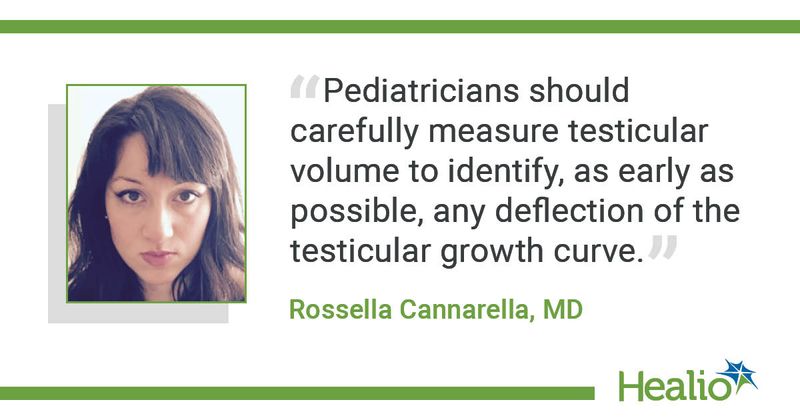Obesity, high insulin levels linked to lower testicular volume in adolescents
ATLANTA — Adolescent boys with overweight, obesity, hyperinsulinemia or insulin resistance have a lower testicular volume compared with those with normal weight, according to a presenter at ENDO 2022.

“Male infertility recognizes many etiological factors, though most of the time the cause of male infertility cannot be identified even after a thorough diagnostic workup,” Rossella Cannarella, MD, a PhD candidate in the division of endocrinology and andrology, department of clinical and experimental medicine at the University of Catania in Italy and a research fellow at the American Center for Reproductive Medicine at the Cleveland Clinic, told Healio. “A portion of idiopathic male infertility cases can relate to childhood overweight and obesity. In fact, overweight, obesity and their associated comorbidities, insulin resistance and hyperinsulinemia, have been shown to negatively affect testicular volume in childhood and adolescent age.”

Cannarella and colleagues evaluated the impact of obesity, hyperinsulinemia, insulin resistance and type 2 diabetes in a cohort of boys aged 16 years and younger. Testicular volume, age, BMI, insulin, fasting glycemia, HbA1c and glucose levels at 120 minutes after an oral glucose tolerance test were collected. Findings were examined separately for prepubertal boys younger than 9 years, peripubertal boys aged 9 to 14 years and postpubertal boys aged 14 to 16 years.
The study cohort included 61 adolescents with normal weight, 53 with overweight and 150 with obesity. There were 45 participants with insulin levels of 20 IU/mL or higher, and 97 were considered insulin resistant with a homeostasis model of assessment of insulin resistance of 2.5 or greater. Prediabetes was prevalent in 22 boys, and three had type 2 diabetes.
In the peripubertal age group, testicular volume was higher in those with normal weight compared with overweight or obesity. Boys with normal insulin levels had a higher testicular volume in prepuberty and postpuberty compared with those with hyperinsulinemia, whereas in peripuberty, boys with hyperinsulinemia had higher testicular volume compared with those with normal insulin levels.
In postpuberty, adolescents with insulin resistance had lower testicular volume than those with normal insulin resistance. Type 2 diabetes did not influence testicular volume in any age group.
“Pediatricians should carefully measure testicular volume to identify, as early as possible, any deflection of the testicular growth curve in all their patients, especially in children or adolescents with overweight and obesity,” Cannarella said. “They should also request a semen analysis and andrological counseling for all their adolescent patients, particularly those overweight and obesity for the primary prevention of male infertility. All these will help to counsel patients with overweight or obesity, not only for the risk of developing the well-known obesity-associated comorbidities, but also for male infertility.”
Cannarella said there should be longitudinal studies evaluating sperm parameters and fertility in men who had overweight or obesity in childhood or adolescence to further examine the negative impact obesity may have on fertility.

